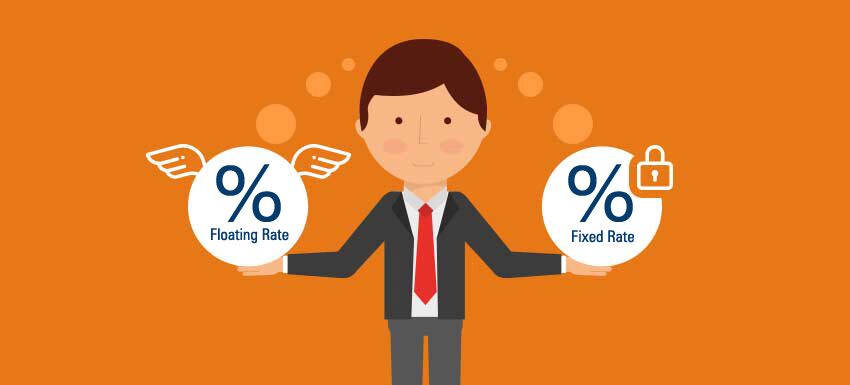Floating And Fixed Rate For Home Loan

After deciding on going for a home loan, the next step is to step into the real estate market and conduct thorough research of all the offers and discounts provided by numerous lenders. The decisive action of choosing the best interest rate, and highest loan amount, along with the most trustworthy lender, is a tough and important one. Since this decision can impact your finances for the next 20-25 years, You should carefully consider the most convenient and financially beneficial deal. You should check how much Home Loan Processing Fees, foreclosure charges, and part-payment penalties is the lender imposing.
Many financial institutions like Yes Bank provide different interest rates on their home loan scheme. The interest is computed using the Home Loan EMI calculator.
There are two methods to calculate the rate -
(i) Fixed-rate method
(ii) Floating Rate method
The existing and new customers can opt for either of these methods to get a Yes Bank Home Loan.
Fixed Interest Rate Method :
People can choose to pay the same amount of monthly instalments throughout the loan tenure. The interest rate is computed before the term starts, and it remains constant till the loan amount gets repaid fully. People who do not want to take any risks with the home loan prefer to go for the fixed rate method. Since the real estate market is continuously varying, the rates may be favourable at one point and may become high when the market is down, and losses are high. The trend of the market rate is essential while choosing the Home Loan Interest Rate. If there is a certainty that the rate will not fall further beyond a specific limit, the borrower can quote a reasonable interest rate to get the best deal.
Floating Interest Rate Method :
As the market rises or falls, the interest rate and demand for real estate get affected likewise. This is a volatile interest rate that gets calculated after each instalment is paid. It is dependent on the base rate offered by the lender. If the base rate fluctuates, the interest rate is automatically updated and revised. The floating rates are relatively cheaper than fixed rates. They start at 1%-2.5% lower than fixed interest rates. Initially, both parties decide the rate based on the market rate, and it keeps getting modified without any influence from either party thereon.
The following table compares the floating and fixed rates over specific parameters -
| Floating Interest Rate | Fixed Interest Rate |
| Lower ROI | Higher ROI |
| Gets influenced by market conditions | Not affected by the market conditions |
| EMI changes as per interest rate | Constant EMI Throughout |
| Tough to manage and plan future finances | A proper Budgetary structure is possible |
| Results in saving money | Provides a sense of security |
| Suitable for long-term (up to 30 years) | Preferable for short-term (up to 10 years) |
Since home loans are long-term loans and a proper financial structure is needed to keep sufficient funds to repay the amount, a fluctuating or floating interest rate can be a problem as it can either act in your support or against you. The instalments can become challenging to repay, and the borrower's savings might also get affected.
Conclusion -
Many banks offer the facility of switching from fixed rate to floating rate and vice-versa. There is an additional switching/conversion charge of around 2% of the total loan amount that the applicant should pay. Age also plays a part in deciding the type of interest rate method. Both these methods have their advantages and disadvantages, and the applicant must consider all these factors along with his financial position while making the final decision.
Also read this: What is down payment in home loan
